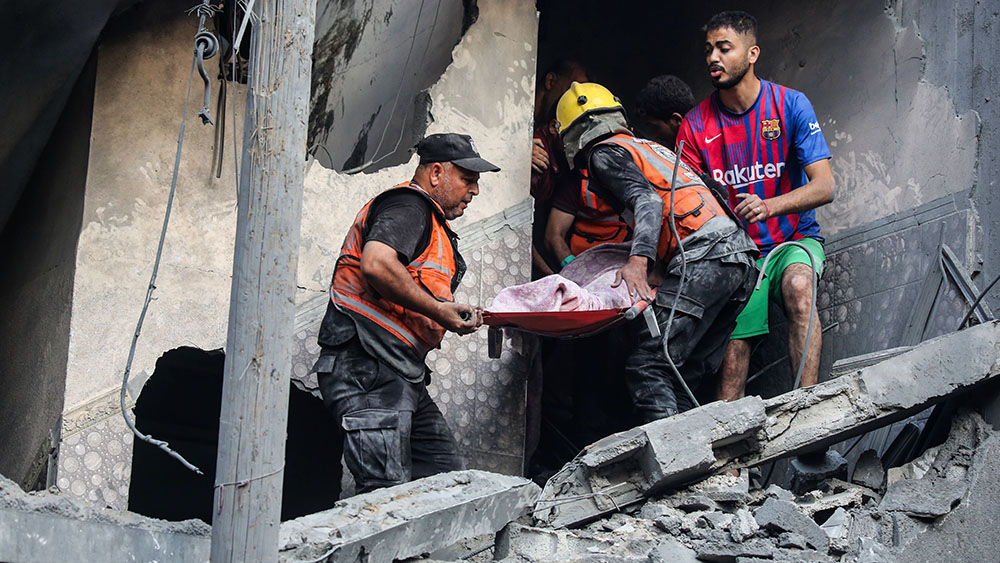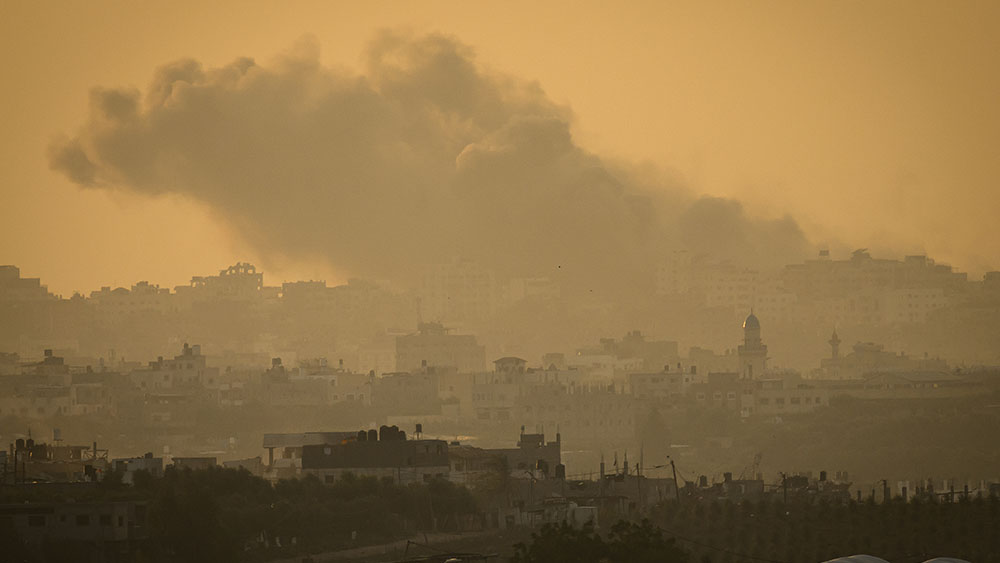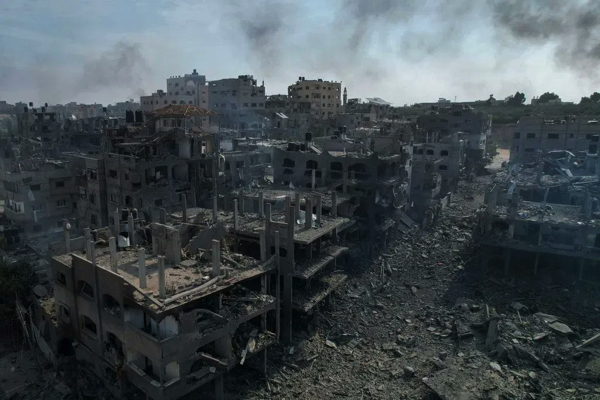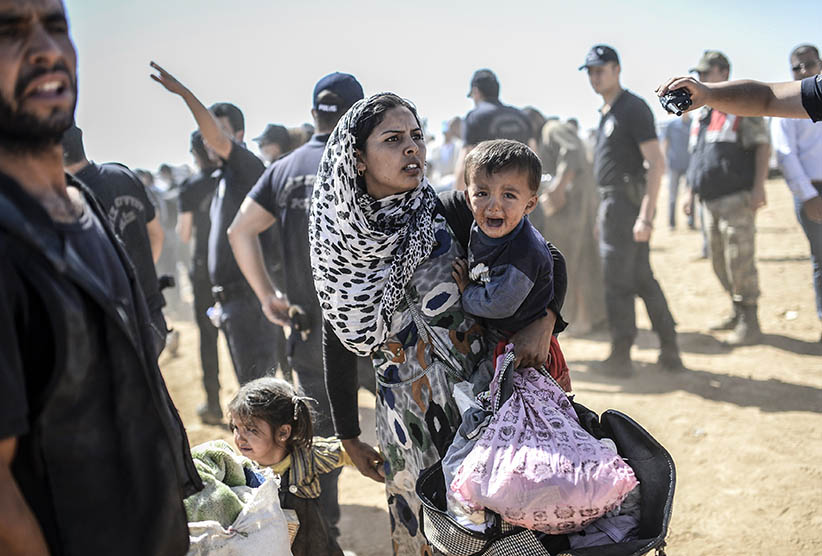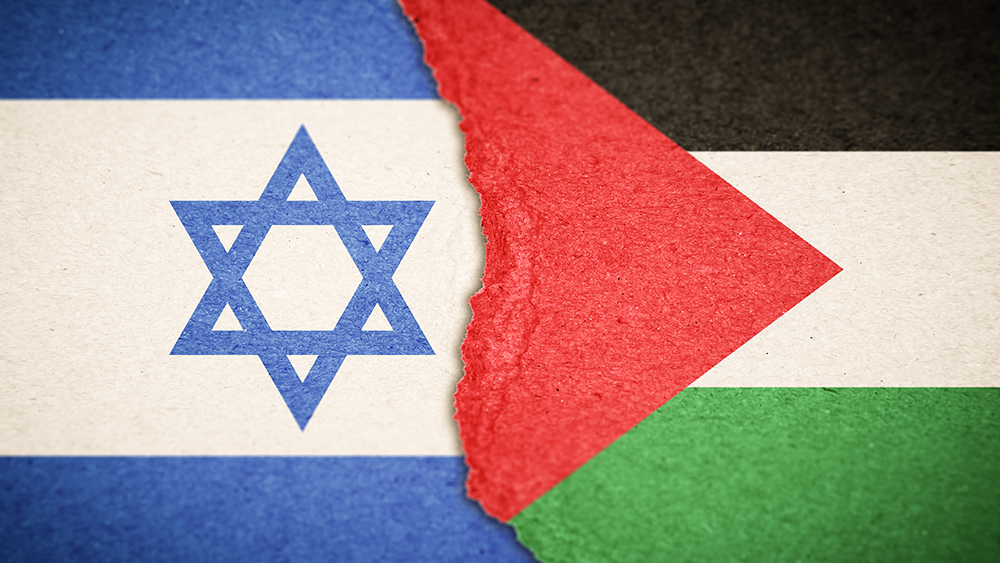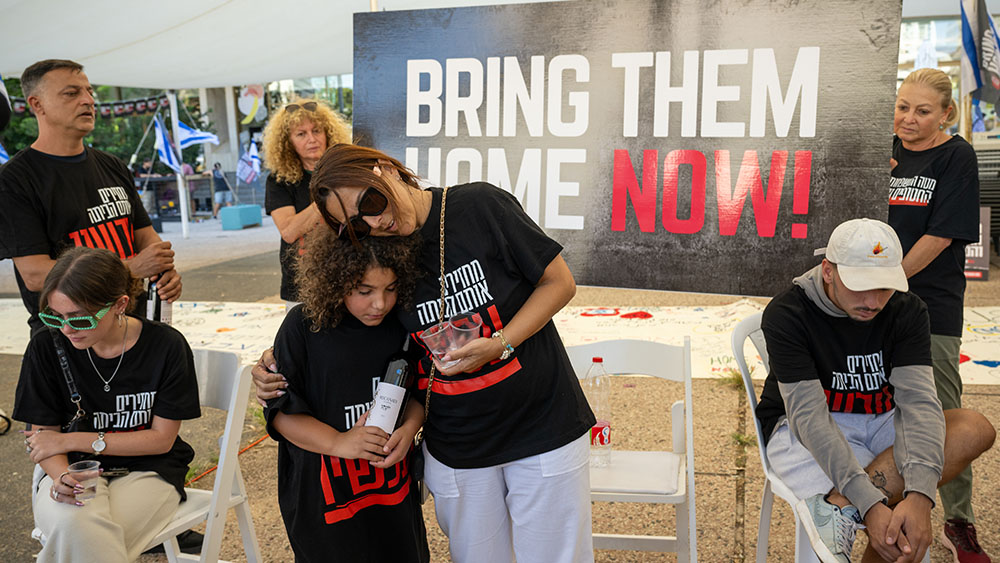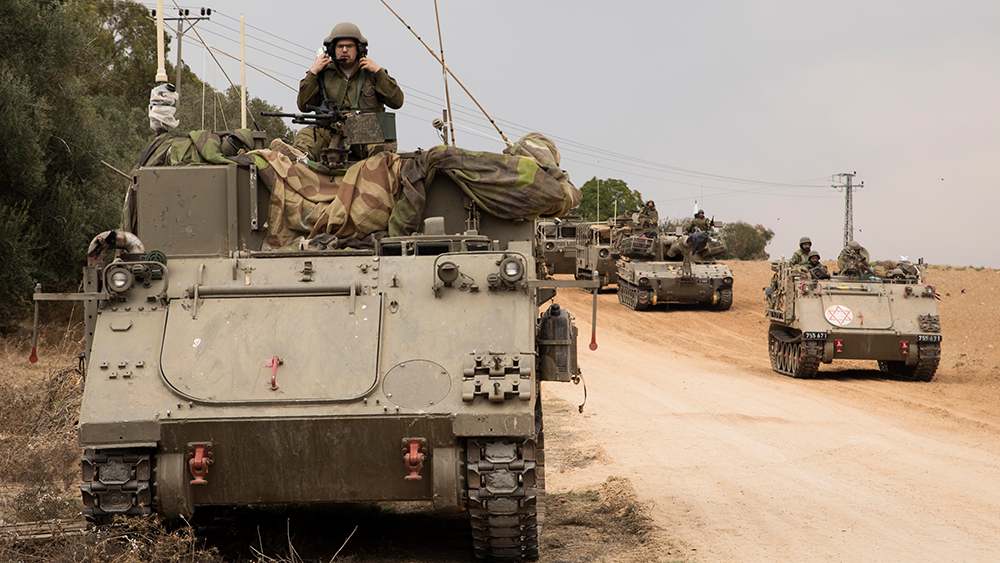Without fresh water, Palestinians trapped in Gaza forced to wash, bathe in polluted Eastern Mediterranean Sea
11/10/2023 / By Arsenio Toledo

Due to Israel’s blockade of Gaza, families have run out of freshwater sources and have been forced to use the polluted seawater of the Mediterranean to bathe and wash their clothes.
In Alif Elementary Boy’s School in the southern Gaza city of Deir al-Balah, a former United Nations-run school turned into a refugee camp, Andaleeb al-Zaq and the 15 other members of her close and extended family were forced to flee here after their home in the Shujaiya neighborhood east of Gaza City was destroyed shortly after Israel began bombing the Strip. (Related: Israel’s genocidal “war of starvation” against Gaza ensures many survivors of bombings die of thirst and hunger.)
“All the classrooms were already full with other families, about 80 people per class, so we set up a tent on the school grounds,” said Andaleeb. “There’s 8,000 people taking shelter there.”
The school is close to the Mediterranean Sea, and because of the complete lack of clean water, either for drinking, hygiene or washing clothes, it has become a standard practice for families and their children to head into the polluted sea to swim, bathe and wash their clothes.
“We have no water, no sanitation, no running sewage system,” said Imm Mahmoud, a 52-year-old mother whose entire family is staying at the same school. “With this lack of basic hygiene, neither the adults nor the children are comfortable.”
97% of remaining freshwater in Gaza deemed unfit for human use
In a report by the humanitarian non-profit organization the American Near East Refugee Aid (Anera) published on ReliefWeb, an alarming 97 percent of the remaining water in Gaza has been deemed unfit for human use, either for drinking or other essential activities.
The United Nations Office for the Coordination of Humanitarian Affairs reported that only 26 trucks carrying vital water and sanitation supplies were able to enter the Gaza Strip between Oct. 21 and Nov. 1. The office noted that this is nowhere near enough to meet the bare minimum for the survival of the Strip’s 2.3 million population.
In the most crowded refugee camps in the southern Gazan city of Khan Younis, there is only one functioning toilet per 600 people. This problem will only worsen as Israel keeps up its blockade and indiscriminate bombing of Gaza and as more refugees flee to the south of the Strip.
Anera warned that even before Israel’s latest genocidal campaign against Palestinians in Gaza, people in the West Bank and Gaza had access to just 80 liters (21.13 gallons) of water for all purposes per day, already below the international standard of 100 liters (26.4 gallons) set by the World Health Organization.
Now, thanks to Israel’s blockade and its throttling of Gazan access to aid supplies, the average consumption of water for all purposes in the Strip has fallen to between two to three liters (0.53 to 0.79 gallons) a day per person. Three liters is the bare minimum amount of water a person needs to drink to avoid health problems.
Mahmoud noted that she understands the seawater in the Gazan portion of the Mediterranean is polluted, but she has no choice.
“Children have been suffering from diarrhea, coughs and colds, from the pollution and swimming in the sea,” she said. “But what do you expect them to do? They have to find a way to release their energy. Being cooped up in a school can lead to a lot of yelling and fights with their families.”
Learn more about Israel’s ongoing genocidal campaign against Palestinians in Gaza at Genocide.news.
Watch this episode of the “Health Ranger Report” as Mike Adams, the Health Ranger, explains why Israel is willing to deliberately carry out atrocities against Palestinians in Gaza.
This video is from the Health Ranger Report channel on Brighteon.com.
More related stories:
Israel admits willingness to inflict “mass civilian casualties” in Gaza – GENOCIDE is the endgame.
Sources include:
Submit a correction >>
Tagged Under:
big government, blockade, clean water, dangerous, democide, Ecology, environment, fresh water, Gaza, Gaza Strip, genocide, humanitarian crisis, inhumane, insanity, Israel, Israel-Palestine war, Mediterranean Sea, Palestine, seawater, SHTF, siege, survival, terrorism, water crisis, water supply
This article may contain statements that reflect the opinion of the author
RECENT NEWS & ARTICLES
COPYRIGHT © 2017 HUMANITARIAN NEWS

